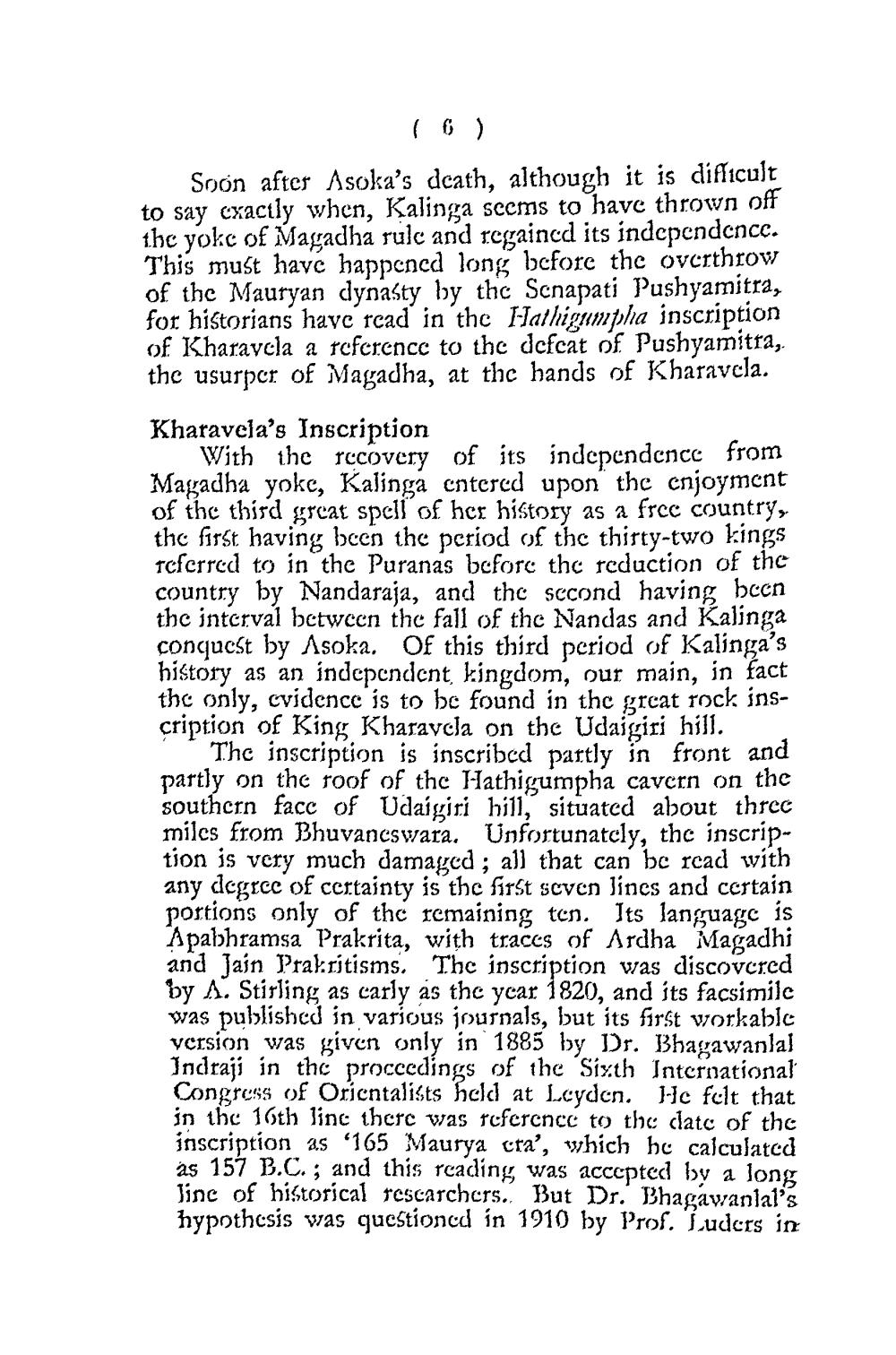Book Title: Jainism in Kalingadesa Author(s): Bool Chand Publisher: Jain Cultural Research Society View full book textPage 8
________________ Soon after Asoka's dcath, although it is difficult to say cxactly when, Kalinga seems to have thrown off the yoke of Mayadha rulc and regaincd its indcpcndcncc. This must have happened long before the overthrow of the Mauryan dynasty by thc Scnapati Pushyamitra, for historians have read in thc Hathigumpha inscription of Kharavela a reference to the dcfcat of Pushyamitra, the usurpcr of Magadha, at the hands of Kharavcla. Kharavela's Inscription With the recovery of its independence from Magadha yokc, Kalinga entered upon the cnjoyment of the third great spell of her history as a free country, the first having been the period of the thirty-two kings referred to in the Puranas before the reduction of the country by Nandaraja, and thc second having been the interval between the fall of the Nandas and Kalinga conqucst by Asoka. Of this third period of Kalinga's history as an independent, kingdom, our main, in fact the only, cvidcncc is to be found in thc grcat rock inscription of King Kharavca on the Udaigiri hill. Thc inscription is inscribed partly in front and partly on the roof of thc Hathigumpha cavern on the southern facc of Udaigiri hill, situated about three milcs from Bhuvaneswara. Unfortunatcly, the inscription is very much damaged ; all that can be read with any degree of certainty is the first seven lines and certain portions only of thc remaining ton. Its language is Apabhramsa Prakrita, with traces of Ardha Magadhi and Jain Prakritisms. The inscription was discovered by A. Stirling as carly as the year 1820, and its facsimile was published in various journals, but its first workable version was given only in 1885 by Dr. Bhagawanlal Indraji in the proceedings of the Sixth International Congress of Oricntalists held at Leyden. He felt that in the 16th line there was reference to the date of the inscription as '165 Maurya cta', which he calculated as 157 B.C.; and this reading was accepted by a long Jinc of historical rescarchers. But Dr. Bhagawanlal's hypothesis was questioned in 1910 by Prof. Luders inPage Navigation
1 ... 6 7 8 9 10 11 12 13 14 15 16 17 18 19 20 21
